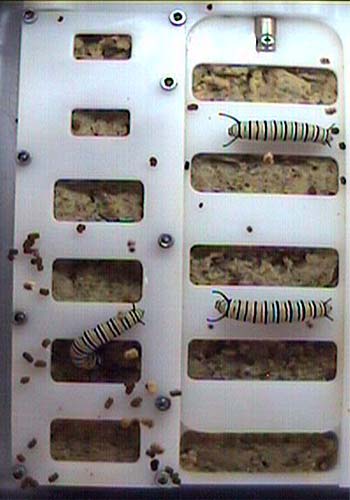
|
MOLTING FROM FOURTH TO FIFTH INSTAR |
The monarch caterpillars on the right in the image below appear to be preparing to molt that is to shed their skins (cuticles) to become 5th and final instars (photo from the International Space Station).
The following information from the 11-page Monarchs in Space guide (available for download from the project home page) is relevant at this time.
Students should be able to observe this process in the classroom. And, if they can, such observations may give rise to a number of questions such as: how long does the molting process take (i.e. from the time they make the silk bed until they shed their skin), how long does it take a caterpillar to “walk” out of the old skin, how long does it take a new 5th instar to mature so that it can turn around to eat the old skin, why do they eat the old skin anyway, how long does this eating process take and finally how long is it from shedding to when they return to feed on the diet? Believe it or not scientists do not have data on any of these questions. |
DONATE NOW! |
|
Monarch Watch is a non-profit program based at the University of Kansas and we need your financial help to allow us to continue to offer educational, conservation, and research programs. If you enjoy and/or appreciate all that Monarch Watch offers throughout the year, please consider making a donation today - it's quick, easy, secure, and fully tax-deductible. You can even set up a recurring gift (monthly or annually) if you'd like. We rely on contributions from Monarch Watchers just like you to keep the program going - thank you for your continued support! If you would rather mail in a donation or have questions, please visit Giving in Support of Monarch Watch. |
